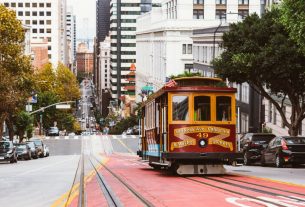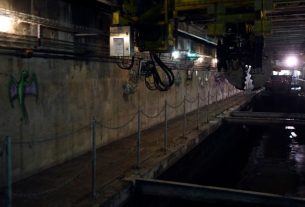There are many nicknames for Shanghai. It is called “Gateway to the world”, “Paris of the East”. Or “dragon-head metropolis.” When translating the actual Chinese city name, “offshore” is added. The meaning of all the names becomes clear when you visit Shanghai, one of the largest cities in the world.
Difficult to really understand the gigantic city with its more than 24 million inhabitants. Because Shanghai is not just a city, but a small province that is constantly growing thanks to the reclamation of the Yangtze River. And it’s booming: the city’s port is the largest container port in the world, and Shanghai is also a center of the textile industry. The Pudong district in particular, whose construction only started in 1990, is considered the economic district of Shanghai. Futuristic skyscrapers stand side by side here. These include the 492-metre-high Shanghai World Financial Center, at the base of which is a museum chronicling the history of Shanghai.
Heavy air pollution
However, the rapid development of the city in eastern China, which is about 1,225 kilometers from Hong Kong and 1,068 kilometers from Beijing (as the crow flies), also has its downsides. They are called smog, noise and pollution. So far, this has not been able to reduce the onslaught of the Chinese, and Shanghai is still so popular that the city controls the influx.
Also of interest: the new highest restaurant in the world
Attractions in Shanghai
Shanghai Grand Theater and Shanghai Museum
However, Shanghai is not only a booming economic metropolis, but also a cultural city with many offers. For example, the Shanghai Grand Theater with three performance halls, where not only plays and chamber music performances are shown, but also Chinese opera performances. Or the Shanghai Museum, which exhibits Chinese art and where demonstrations of historical ceramic techniques are held regularly.

temples and parks
If you drive through Shanghai, you will come across temples everywhere. Sometimes they look a little out of place among the skyscrapers – and at the same time reassuring because they show China as Central Europeans still remember it. Incidentally, this can be seen particularly well in the Old Town of Shanghai. There are still richly decorated old houses, there is a bazaar, and the famous Yuyuan Garden, which was laid out in 1559. 30 pavilions and lakes make up the garden, which is one of the most important attractions in Shanghai. This is also because the park is one of the few largest public green spaces in the city. One of the most attractive structures in the city is the seven-storied Long Hua Pagoda, built during the Song Dynasty (960-1279).

Also of interest: China’s craziest skywalk
Shopping on Nanjing Lu Street
In stark contrast to this is Nanjing Lu, the great shopping street. At night, colored lights flicker from countless neon billboards. The east section of the road, Nanjing-Dong, is a paradise for luxury shoppers. And at the crossroads of Xizang Street, the No. 3 Department Store beckons. 1, the second largest in the country.

Incidentally, another major street in Shanghai is “The Bund”, a 2.6 kilometer long waterfront lined with countless buildings in different architectural styles, some of which are more than 100 years old. There are 33 significant houses on the Bund – no wonder the street is one of the attractions of Shanghai.
Traveling with the Transrapid
If you want to get going in Shanghai, you can not only use the subway, but also take the Transrapid, a state-of-the-art maglev train that travels at speeds of up to 430 kilometers per hour.
(Text: Silke Böttcher)




